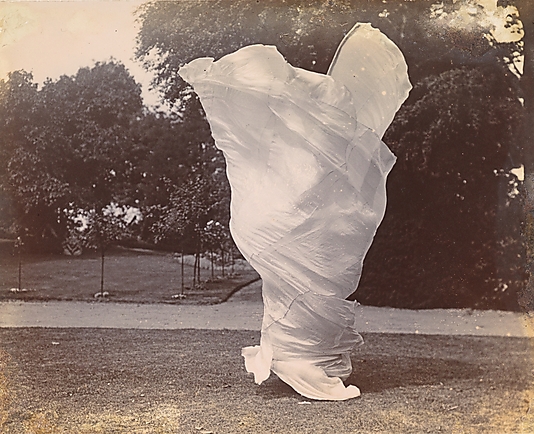“In Search of Lost Movement, Movers, and Music”
Wednesday, May 7, 4:30–6:00 PM
Logan Center, Terrace Seminar Room (801)
Daniel Callahan, Mellon Postdoctoral Fellow, Department of Music and the College
Tom Gunning, Edwin A. and Betty L. Bergman Distinguished Service Professor, Department of Art History, Department of Cinema and Media Studies, and the College
Samuel Joshua Beckett, [Loie Fuller Dancing], ca. 1900.
In the 1890s Loie Fuller, draped in especially long silks, would take center stage in front of darkened halls and spin and manipulate her fabrics under changing lights. Audiences and critics, including Stéphane Mallarmé, loved it. Over a hundred years later, some scholars in different fields—dance studies, comparative literature, art history, philosophy (the dust jacket of Jacques Rancière’s English translation of Aisthesis capitalizes on Fuller’s image), and film studies (most notably my esteemed respondent, Tom Gunning, http://cms.uchicago.edu/faculty/gunning)—have turned their attention to Fuller after decades of relative neglect. Absent in the recent literature on Fuller—as in the vast majority of contemporary accounts —is a consideration of the role music played in her performances. Why is this? For Wednesday’s workshop, I would like us to consider some material from my book manuscript’s first chapter. At the end of the chapter, I introduce Loie Fuller and begin to explore her performances as acts of music visualized, as embodiments of Hanslick’s arabesque, and as key part of the prehistory of early US modern dance and its dependence on music.
